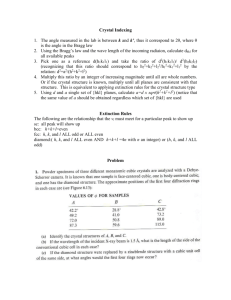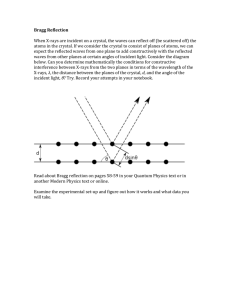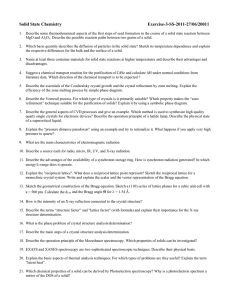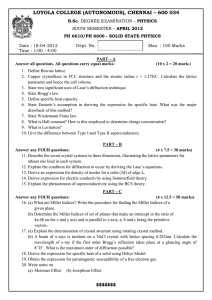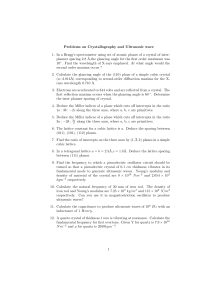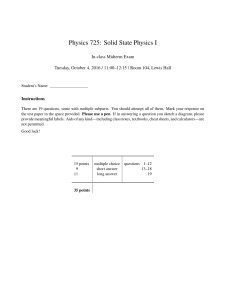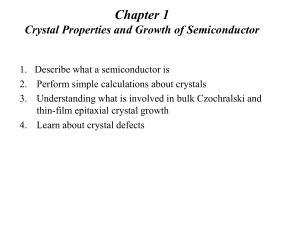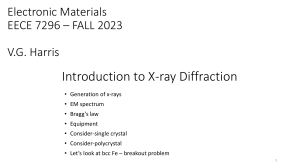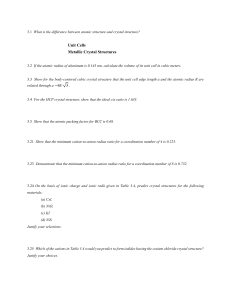Haldia Institute of Technology Department of Applied Sciences
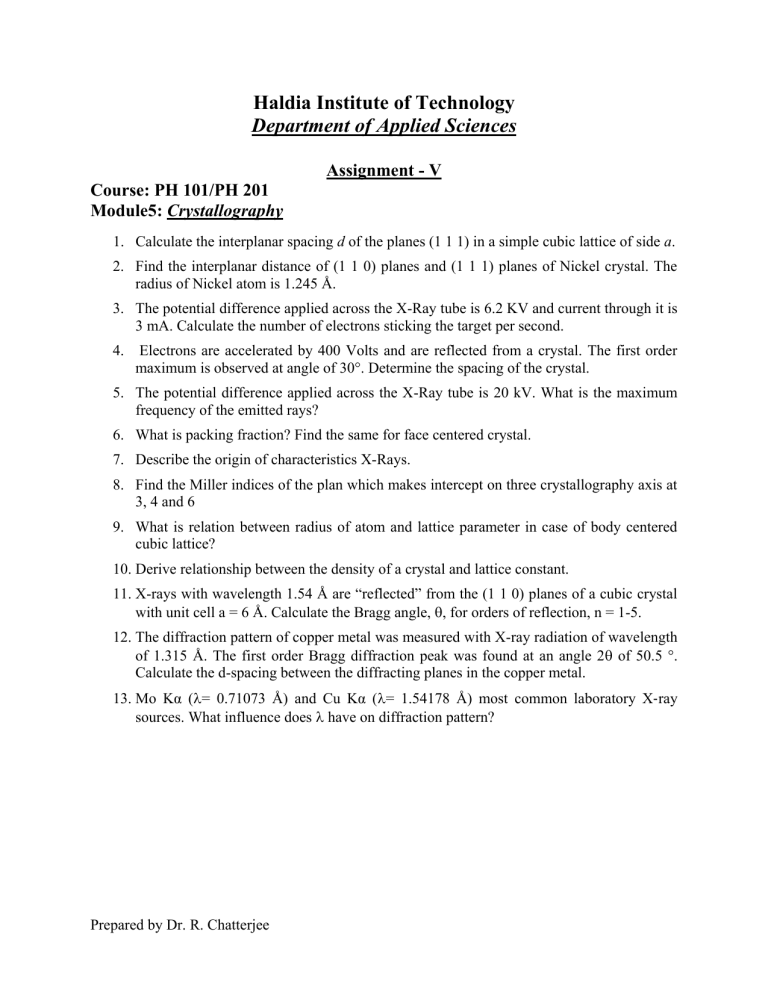
Haldia Institute of Technology
Department of Applied Sciences
Assignment - V
Course: PH 101/PH 201
Module
5
: Crystallography
1.
Calculate the interplanar spacing d of the planes (1 1 1) in a simple cubic lattice of side a .
2.
Find the interplanar distance of (1 1 0) planes and (1 1 1) planes of Nickel crystal. The radius of Nickel atom is 1.245 Å.
3.
The potential difference applied across the X-Ray tube is 6.2 KV and current through it is
3 mA. Calculate the number of electrons sticking the target per second.
4.
Electrons are accelerated by 400 Volts and are reflected from a crystal. The first order maximum is observed at angle of 30°. Determine the spacing of the crystal.
5.
The potential difference applied across the X-Ray tube is 20 kV. What is the maximum frequency of the emitted rays?
6.
What is packing fraction? Find the same for face centered crystal.
7.
Describe the origin of characteristics X-Rays.
8.
Find the Miller indices of the plan which makes intercept on three crystallography axis at
3, 4 and 6
9.
What is relation between radius of atom and lattice parameter in case of body centered cubic lattice?
10.
Derive relationship between the density of a crystal and lattice constant.
11.
X-rays with wavelength 1.54 Å are “reflected” from the (1 1 0) planes of a cubic crystal with unit cell a = 6 Å. Calculate the Bragg angle,
, for orders of reflection, n = 1-5.
12.
The diffraction pattern of copper metal was measured with X-ray radiation of wavelength of 1.315 Å. The first order Bragg diffraction peak was found at an angle 2
of 50.5 °.
Calculate the d-spacing between the diffracting planes in the copper metal.
13.
Mo Kα (
= 0.71073 Å) and Cu Kα (
= 1.54178 Å) most common laboratory X
‐ ray sources. What influence does
have on diffraction pattern?
Prepared by Dr. R. Chatterjee
